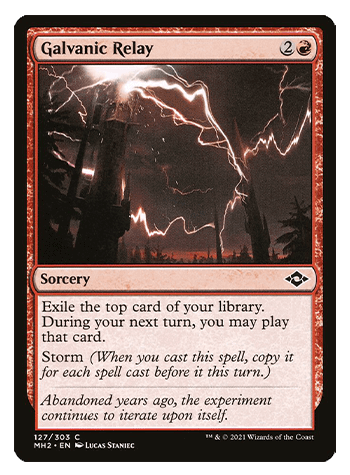I feel like it’s been a while since I’ve written a long-winded article, so here it goes!
Whether you want to believe it or not, Miracles is currently the best deck in Legacy again. Many Legacy stalwarts feel this way, not to mention the metagame data backs this up between my spreadsheet and mtggoldfish. What does this mean for Legacy players? If you want to maximize your percentage of winning an event, you’re likely going to be playing Tundras. But it doesn’t have to be that way, I have some thoughts on how both combo decks and non-combo decks can defeat the resilient control powerhouse. But before we get to that, let’s talk about what makes Miracles great so we can have a better understanding of how to beat it.
Why is Miracles good?
I’m fortunate enough to have been invited to some online communities where deck discussions happen with some very bright minds. The driving force behind Miracles is several very-talented individuals (plus Anuraag) pulling together to figure out issues with the deck and how to improve it. Being a member of the storm community for years at this point, we don’t work together as they do, it’s something I’m envious of as I wish we had a collaboration such as theirs. That said, I’ve learned so much from some of them from a deck-building standpoint but also from an analytical view.
Legacy Challenge
10/07/2018
- 4 Brainstorm
- 4 Ponder
- 3 Preordain
- 1 Portent
- 4 Accumulated Knowledge
- 2 Predict
- 4 Flooded Strand
- 2 Scalding Tarn
- 2 Arid Mesa
- 5 Island
- 2 Plains
- 2 Tundra
- 2 Volcanic Island
- 1 Snapcaster Mage
- 1 Council’s Judgment
- 2 Flusterstorm
- 2 Back to Basics
- 1 Celestial Purge
- 2 Engineered Explosives
- 2 Pyroblast
- 1 Red Elemental Blast
- 1 Spell Pierce
- 1 Surgical Extraction
- 1 Vendilion Clique
Here we have one of Anuraag Das’s lists from a Legacy Challenge within the last month, I say “one of his lists” because Anuraag top 8’d three Legacy Challenges in the month of October. Miracles is a very good deck, but why is that? If you look at the decklist, it has some very powerful cards such as Terminus, Force of Will, Entreat the Angels, Counterbalance, Back to Basics, and Jace, the Mind Sculptor being held together by a suite of eighteen draw spells. These draw spells allow the deck to find whatever it needs in a reasonable amount of time in order to answer any given problem, but they also allow the deck to stabilize and recover from the damage the opponent may have done. Cards such as Predict and Accumulated Knowledge provided much-needed card advantage to recover from effects such as Thoughtseize or Hymn to Tourach, but more importantly, they allow the deck to pull ahead and close the door once it’s gained control of the game. After a long game against Miracles, a player can be in “top-deck” mode at parity with Miracles and they’re already at a disadvantage due to an Accumulated Knowledge off the top drawing three or four cards or a Snapcaster Mage doing the same. This is what has put Miracles over the top, compared to a deck like Grixis Control or Grixis Delver.
I don’t believe that the second best deck in Legacy is on the same playing field at the moment and it’s due to the Miracles community solving the metagame puzzle. Which brings me to my next point, how do you beat Miracles then?
If you analyze the deck, there’s a lot of “air.” What I mean by this is there’s actually a lot of cards that simply do nothing to impact the game or board state, most of these cards are cantrips and lands (61% of their cards). The power behind Miracles, as I said, is the ability to use these card draw spells to find what they need for any given match-up, which means that their initial hands are likely cantrips, a land or two, and a random answer spell. This is the actual weakness in modern-day Miracles – their opening hands. Miracles is weakest in the set-up stages. If you can attack them at this point in the game, this is when you will be the most successful. This goes for all decks, not just combo.
If you allow Miracles to get past this stage of the game, between Predict, Accumulated Knowledge, Snapcaster Mage, and Jace, the Mind Sculptor they will bury you in card advantage and lock you out of the game even without Counterbalance. Their mid-to-late is too strong to out-grind them, this is why we’ve seen Grixis Control and other “grindy” decks die out slowly over the last few months.
How to beat Miracles as TES
As Storm, you do not defeat Miracles by playing Green. I know that must be strange to read, but it’s very true. Abrupt Decay is no longer good against them, which even seems weird for me to write out – but it couldn’t be truer. The average storm list plays two copies of Abrupt Decay and Miracles plays up to two copies of Counterbalance (you often have to assume they have them even if you didn’t see it in game one), which means you need one of your two copies when they have their “two of.” Extremely improbable, especially when you consider how Miracles has the digging power of finding their card that stops you from finding your answer. Often when you have found your copy of Abrupt Decay and they do actually do have a Counterbalance, it’s at a point in the game where you’ve essentially already lost due to giving them adequate time to cast more cantrips to stack up on Snapcaster Mage, Flusterstorm, and multiple copies of Force of Will.
If Abrupt Decay isn’t even good against Miracles, why are you even playing it? You would have a more consistent and efficient deck if you just didn’t play green and instead just played more bounce spells. This is what lead me to play Wipe Away and Hope of Ghirapur. No one is pretending that Hope of Ghirapur is better than Xantid Swarm, but playing green just for Xantid Swarm and messing up your mana base isn’t worth the upsides in comparison. Hope of Ghirapur is a suitable replacement, that is highly effective while being able to be cast off basic lands (I’m looking at you Back to Basics). Then there’s Wipe Away which I gave a try for some time (a little over two-hundred matches), the downsides were the same as Abrupt Decay where you’re buried in card-advantage and answers before you’re in a position to attempt to win the game. The upside of being able to cast Wipe Away much more easily ultimately still wasn’t enough to justify playing anything to answer Counterbalance.
I had tested an “ANT-style” package in The EPIC Storm in an effort to beat both Miracles and Grixis Control leading up to Star City Games: Baltimore, with two copies of Cabal Ritual in the main deck as well as two Past in Flames in the sideboard. The plan was to side into ANT against these two control decks, it worked wonderfully against Grixis Control as I found my match win percentage (MWP) go all the way over 75% (sample size at the time was just over 20 matches) although I found my MWP against Miracles at an all-time low almost down to 25%. This was due to the reasons we’ve outlined already, I had slowed down by taking Chrome Mox out of my deck and trying to win with a slower more resilient game-plan. This allowed Counterbalance as well as their card-advantage plan to blow me out of the water. Feeling pretty low about the 0-9 slump I had been on, I confided in my inner circle. At the end of the conversation, we decided that we need to focus on things that The EPIC Storm does well and that’s winning fast.
Our sideboard plan as I mentioned was to take out Chrome Mox, we got rid of that. Then we tried the plan of taking out Rite of Flames so we could stay consistent and fast, while this plan was okay, it wasn’t providing the results we wanted. Ultimately, it was discovered that The EPIC Storm wants Chrome Mox, Rite of Flame, and to keep in Empty the Warrens versus Miracles. Being fast wins games and a majority of the time, the Goblins plan is often fast enough to beat Miracles. Setting up Terminus takes time and not all lists have Engineered Explosives (Anuraag’s list above has two copies). I’ve also found that slower repeated Empty the Warrens are a way that you can beat a resolved Counterbalance, try not to over-extend and to keep some resources back to finish them off. There are games where I cast Empty the Warrens with the idea that if it deals them 10-12 damage before they find their answer, great! Because in the meantime they’re not digging for Counterspells and other disruptive elements while I’m preparing for my actual kill. With this game-plan, I found my MWP go dramatically up. It’s now resting at 43% with my awful skid weighing the numbers down.
How other Legacy decks can fight back
Outside of TES, you can look at BR Reanimator or Dredge as other fast decks that take advantage of Miracles early game-struggles. Both of which have been putting up impressive results over the last month. We’ve found that being fast is a way of being more successful against Miracles, which can be a double-edged sword against a deck that often packs Force of Will as well as Surgical Extraction. I believe there are other strategies that can adopt a similar philosophy, that would increase their odds.
ANT could cut their flex spot of either the second Dark Petition or Past in Flames, Rain of Filth, and their 15th land in an attempt to become faster with copies of Chrome Mox. Which would also make their Ad Nauseams more bearable. Alternatively, they too could lean into what they do better which is out-grind the deck that’s best at out-grinding. A difficult task for sure, but Cyrus Corman-Gill had an interesting idea of playing four copies of Night’s Whisper that I could get behind. I think ideas like these are how we become more like the Miracles community and push forward innovation to keep up with the current metagame. I think the storm community rehashes a lot of old ideas, expecting dramatically different results. That said, I do think one old idea could be very good due to Miracles changing how it plays.
Defense Grid is better than ever due to Miracles consisting of more draw spells than it has in the past. People often say, “wouldn’t another discard spell be better?” The answer is “no” due to more draw spells, discard spells are naturally weaker. But they also have the downside of allowing the opponent to cast these cards into more countermagic on your combo-turn. This is why I value non-discard disruption spells fairly highly in storm-combo out of the sideboard. Effects like Xantid Swarm, Hope of Ghirapur, Defense Grid, Pyroblast, Surgical Extraction, Silence, and many more spells force your opponent to play the game in a manner in which they were not expecting or at least force them to interact in a way which is less desirable for them. May it be leaving in creature removal, artifact destruction, or creating a situation that forces the opponent to respond rather than letting a discard spell resolve.
Speaking of Surgical Extraction, I think it’s the most effective it ever has been versus miracles from both fair decks and combo decks. The Legacy community has a lot of preconceived notions about cards, I’ve personally heard other players scoff at the idea of siding in Surgical Extraction versus control decks. But it’s important to take a step back and consider it as an option once again. If your opponent’s deck is 29% cantrips and 32% lands, being able to remove all of their copies of Force of Will or Terminus could put you in a very favorable position.
Another possible way to punish Miracles is to make their cantrips worse. Which is difficult to do out of Storm, but I think if I were playing a fair deck such as Delver of Secrets tempo I would be looking at effects such as Winter Orb. If you’re a fan of Winter Orb and mana denial, RUG Delver focusing on Shroud creatures like Nimble Mongoose and True-Name Nemesis could give Miracles fits if you aim to Surgical Extraction their Terminus. Another option for Delver decks would be to look to become faster in the sense of UR Delver, it’s certainly possible that it’s the best form of tempo against Miracles. Partially due to attacking them with Burn rather than just creatures.
Wrap it up!
To summarize, if you want to beat Miracles do it fast and do it early. It’s going to become more difficult as the game progresses due to their powerful cantrip engine. Other decks need to adapt to keep up with the changing of times, taking a step back, and analyze how to take advantage of the enemies weaknesses.
Until next time, keep storming!














